Plants can be a very beautiful addition to any home or property. But it’s also an unfortunate fact that sometimes the most beautiful plants can also be the most poisonous and dangerous.
That’s why you’ll want to be very aware of the plants that you have on your property and to also be very careful about ingesting or coming into contact with them.
Here are twelve common poisonous plants that might be growing on your property now that you don’t even know about:
Hemlock
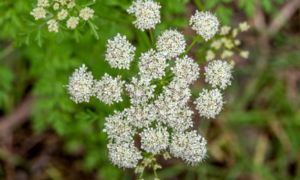
Hemlock is characterized by its tall, hollow stems, fern-like leaves, and clusters of small white flowers.
Ingesting any part of the plant can lead to severe toxicity, causing symptoms such as nausea, convulsions, and ultimately respiratory failure.
It’s one of the most toxic plants in North America, so if you have any on your property, get it removed at all costs.
Hemlock is often mistaken for Yarrow, a beneficial plant with many medicinal uses. Yarrow is known for its anti-inflammatory, antiseptic, and wound-healing properties.
To avoid confusion, I prefer growing my own Yarrow using high-quality, NON-GMO seeds packaged in the US. These seeds ensure you have the genuine Yarrow, not its toxic look-alike. They don’t restock often, so secure your pack from here.
Jimson Weed
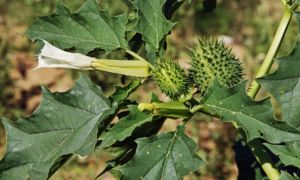 Jimson Weed, also sometimes known as Datura, is a striking-looking plant with large trumpet-shaped flowers and spiky seed pods.
Jimson Weed, also sometimes known as Datura, is a striking-looking plant with large trumpet-shaped flowers and spiky seed pods.
Its hallucinogenic properties have led to its historical use in rituals and ceremonies, but if you ingest it directly it’s highly toxic.
You can experience delirium, hallucinations, and potentially fatal complications such as seizures and coma if you take large enough doses of it. To stay on the safe side, just avoid taking it completely.
Mistletoe
Mistletoe comes with many holiday-themed romantic connotations.
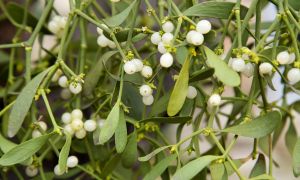
While it’s certainly a gorgeous plant to look at, adorned with its characteristic white berries, all parts of the plant are highly poisonous to humans if ingested.
It can lead to stomach pain, diarrhea, and a lowered heart rate, and in severe cases, it can even cause death.
It’s a beautiful but dangerous addition to any holiday decor, so it’s important to handle it with care and keep it out of reach of children and pets.
Mountain Laurel
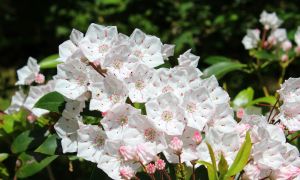 Mountain Laurel is an elegant evergreen shrub known for its beautiful clusters of pink or white flowers and glossy, leathery leaves.
Mountain Laurel is an elegant evergreen shrub known for its beautiful clusters of pink or white flowers and glossy, leathery leaves.
Despite its beautiful appearance, all parts of the plant contain toxins called grayanotoxanes.
Related: 10 Killer Trees You Should Never Have in Your Backyard
If you consume these toxins, it can cause symptoms ranging from nausea and vomiting to more severe effects such as dizziness, convulsions, and cardiac issues. Avoid it!
Nightshade
 Characterized by small, bell-shaped flowers and glossy black berries, Nightshade is infamous for its highly toxic properties.
Characterized by small, bell-shaped flowers and glossy black berries, Nightshade is infamous for its highly toxic properties.
Ingestion of any part of the plant can lead to symptoms such as dilated pupils, hallucinations, convulsions, and even death.
If you’ve read or watched The Hunger Games you should already be familiar with this.
Oleander
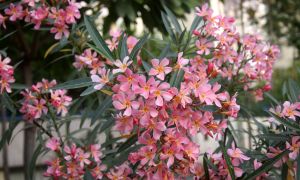 Oleander is a beautiful but deadly flowering shrub renowned for its showy clusters of fragrant flowers in shades of pink, red, white, or yellow.
Oleander is a beautiful but deadly flowering shrub renowned for its showy clusters of fragrant flowers in shades of pink, red, white, or yellow.
However, all parts of the plant contain very toxic compounds known as cardiac glycosides.
If you consume these, it can result in your heart rate slowing down and you starting to feel extremely tired and drowsy. All it takes is consuming just one leaf for you to feel these effects.
Poison Ivy
Poison ivy is widely known for being, well, poisonous (hence its name), but few people understand just how dangerous it really is.
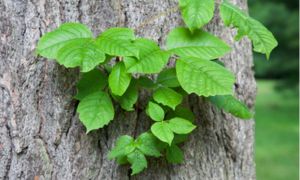
This notorious plant contains an oily resin called urushiol, which triggers an allergic reaction in most people.
All it takes is for your skin to come into minimal contact with poison ivy to experience extreme swelling, intense itchiness, and painful rashes.
Related: The Best Natural Treatments for Poison Ivy and Poison Oak Rash
In some cases, the reaction can be severe enough to require medical attention, especially if the urushiol is inhaled from burning plants or comes into contact with sensitive areas like the eyes or mucous membranes.
The widespread growth of poison ivy in many regions makes it a common hazard, and it’s crucial to learn how to identify and avoid this plant to prevent accidental exposure.
Castor Beans
Rosary Peas
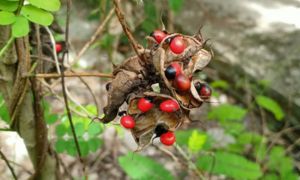 Rosary peas, also known as Abrus Precatorius, are often dried and incorporated into various crafts.
Rosary peas, also known as Abrus Precatorius, are often dried and incorporated into various crafts.
However, when the seeds of rosary peas are inadvertently cracked or chewed, they release a dangerous and potent toxin known as abrin.
This toxin is so deadly that even a minuscule amount can induce severe symptoms and potentially lead to death if ingested.
Foxglove
Foxglove is a tall, beautiful plant known for its striking tubular flowers that come in shades of purple, pink, white, and yellow.
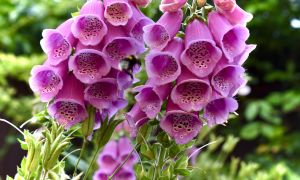
Despite its attractive appearance, Foxglove is highly toxic. All parts of the plant contain cardiac glycosides, which can cause serious symptoms if ingested.
These symptoms include nausea, vomiting, diarrhea, and severe heart problems such as irregular heartbeat and heart failure.
Related: 5 Poisonous Plants That Can Be Used As Medicine When SHTF
The ingestion of even small amounts can be potentially fatal, making it essential to remove Foxglove from your property if you have pets or small children.
Wisteria
 Wisteria is a vine known for its clusters of lavender or white flowers. However, it conceals a danger within its foliage.
Wisteria is a vine known for its clusters of lavender or white flowers. However, it conceals a danger within its foliage.
All parts of the wisteria plant contain toxic compounds that can cause severe gastrointestinal issues and nausea if ingested.
Despite its common presence in gardens, it’s important to handle wisteria with care to prevent accidental ingestion and potential harm
White baneberry
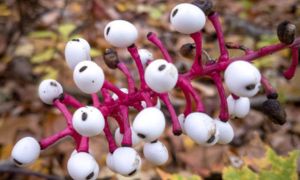 White Baneberry, also known as Doll’s Eyes, is an eye-catching plant featuring clusters of white berries with dark spots that resemble doll’s eyes.
White Baneberry, also known as Doll’s Eyes, is an eye-catching plant featuring clusters of white berries with dark spots that resemble doll’s eyes.
Despite its whimsical appearance, all parts, especially the berries, contain toxic compounds called cardiogenic toxins.
Ingesting these berries can lead to symptoms such as nausea, vomiting, diarrhea, dizziness, and potentially fatal heart and respiratory issues. It’s important to be cautious around Doll’s Eyes and ensure that children and pets are kept away from this poisonous plant
There are many more poisonous plants that you’ll want to be on the lookout for, but the above ones we’ve covered are among the most common ones that many people mistake for being completely harmless. For a comprehensive resource on identifying both safe and hazardous wild plants, you should refer to The Forager’s Guide to Wild Foods.
Once you’ve familiarized yourself with potential dangers, if you find any of these plants on your property, have them safely removed so there’s no chance that you can come into contact with them while you’re at home.
You may also like:
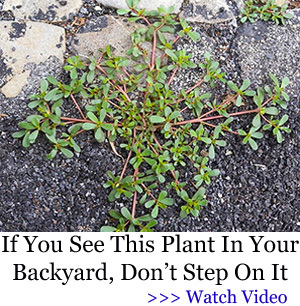 The Worst Guns Every Prepper Should Avoid
The Worst Guns Every Prepper Should Avoid
What Happens If You Smoke Mullein? (Video)
The Dark Side of AI: What You Should Expect
Better Than Aspirin: The Plant Every Prepper Needs in Their Cabinet

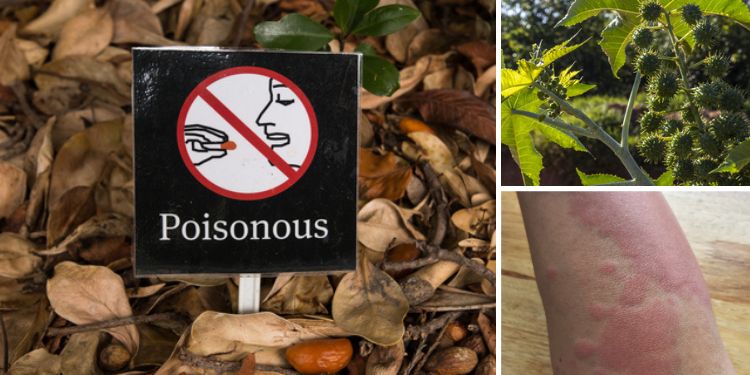
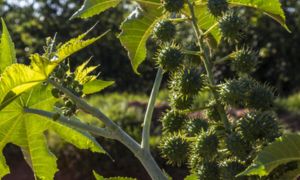




















Foraging is an art an a science based on trial an error of the past ancients in history. There are true species of plants to be edible and lookalikes that have similar characteristics.
This is where this separates the living from the dead of foragers and accidental poisoning.
Even the advanced or professional foragers do get it wrong. What do they have in their arsenal to counteract the poisoning symptoms before it’s too late?
As a novice we hear stories of people thinking the mushrooms they careful picked are the genuine species to eat. There is no cure with mushrooms as they act fast on the internal organs to shutdown body functions.
So who are the current teachers that can show us, give us the clues and down to earth advice on being safe in our foraging of plants?
God bless and thank you.
Not many teachers. I did talk to one and he charges 800 per person for a seminar that does not include in field training. I have spoken with a TPW person and they had some knowledge but no time to spend teaching. I am seriously considering going to the Indian reservation and speaking with them. I do have a couple books but there aren’t definitive books for the Gulf Coast swamp region.
Hemlock – we’re getting loads of it along our roadways due to improper mowing schedules – most of the time they mow after the plant goes to seed – each plant can have 30,000 seeds, so they just plant them down the road.
Also – to differentiate hemlock from other plants – the stems are smooth and usually have purple blotches low on the stem (they can be fully purple as well).
Hemlock is a 2 stage plant – year 1 they form rosettes, which gather energy and make a large tuber below ground – year 2 they bolt up to 10ft tall. Dead plant stalks can remain poisonous up to 3 years. Been fighting against them 4 years now. You can handle with gloves, but may want to mask as well as the pollen can be inhaled in the flower stage.
Expect to feel crappy for a day or two after dealing with them.
Are there online courses we can take before actually going out to forage for food. To make sure we have a basic knowledge to make the right choice for survival food and herbal medicine making?
Thanks for tour help.
Very good info right here. Very freaking good info. Now I’m wondering if the Yarrow is actually Hemlock. Either way it’s got to go. Going to buy some Yarrow I am assured is Yarrow. Thanks for looking out Claude, you may have saved some lives with this info.
Thanks for the email links, keep them coming, please.
Yarrow us a very helpful plant. Its leaves are feathery and at an angle like a fern’s. It typically isn’t as tall as hemlock. I think a closer lookalike to hemlock is Queen Anne’s lace.
Some plant apps are helpful when identifying plants. If you have any nature centers near you, they may offer talks about different plants or offer walking trips where they identify plants.
You can also ask at local greenhouses. Often there are many knowledgeable plant people there. Then again, a lot of greenhouses sell plants that are considered pretty but that would be poisonous if ingested, such as wolfsbane
I don’t think it necessary to rip out every poisonous plant. It’s important to be able to identify them, and if they are in a spot where we find them troublesome, e.g., poison ivy that volunteered to grow in our vegetable garden, then yes remove them.
Thanks to the inet , you can buy, download a mass of info , so your not caught off guard
important to really know what you eat , touch, grow
like mushrooms , the right ones are very good , and the wrong lead to death
many look alikes and many you can hardly distinguish between good and bad
like the world we live in , so many fake, false, copy, look alikes . so be very careful
When your trained you learn
when your not you have causualties of time and place
So just like God says in his word , the bible , the ten commandment s
Choices have consequences
Seek out Good , Versis Evil
Look into the fulness of life so your not decieved and you die in your sin.
Must look , seek , educate like your life depends on it . It Does
The Wild is Very beautiful and at the same time very dangerous
Make the wrong choice and your dead or very sick yes , choices matter
purchase the right books , items , training so your not left behind, left in the dark , decieved
This year i could hardly wait for spring to arrive..some young plants were starting to pop up…i would have sworn that they were some first year mullen plants…i dug them up and planted them in a large pot…they grew into foxglove to my surprise…where their seeds came from i have no idea…maybe from the bird seed i scatter for my feathered friends…but it just amazed me how similar they looked when they were young. I also had a jimson weed plant come up last year in the same area…in the middle of my lambs quarters patch….taking a closer look at plants on my property is my new hobby.